Log in or create new account to save this product to your wishlist.
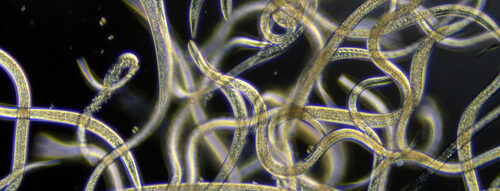
Nematodes — the friendly roundworms for your garden
Nematodes are nature's natural pesticide. Find out when to use them and how!
🌱 All important maintenance moments for your lawn during the year. Leave your email and we will send you the lawn calendar for free.
Enter your email
Receive the lawn calendar in the mail
Enjoy a green lawn all year round!

- Order by 2PM = shipped today
- 250.000+ satisfied customers!
- 60 day satisfaction guarantee
Do you have a pest infestation attacking your lawn? Maybe you have round dry spots or dying grass in clumps around your lawn? Chances are, you have an infestation of ants, leatherjackets, chafer grubs, or similar insect larvae. But the answer isn’t to nuke your lawn with chemicals; the answer is nematodes — little friendly roundworms that benefit your garden.
- What are nematodes?
- Use these critters in your garden
- HM & HB nematodes — a weapon against grubs
- SC nematodes — a weapon against meadow gnat larvae
- SF nematodes — a weapon against fungus gnats
- SK nematodes — a valuable weapon against weevils in low temperatures
- PH nematodes — battling against snails
- How many nematodes do I need to kill off my garden pests?
- How to apply nematodes in your garden
- What are the pros of using them?
- Signs of harmful nematodes
There are over 20,000 species of nematode that we know of. However, scientists estimate there are likely as many as 10 million species.
This article is about how you can attack garden pests biologically with nematodes — avoiding harmful chemicals that can cause nutritional imbalances in your soil and kill your beneficial wildlife.
What are nematodes?
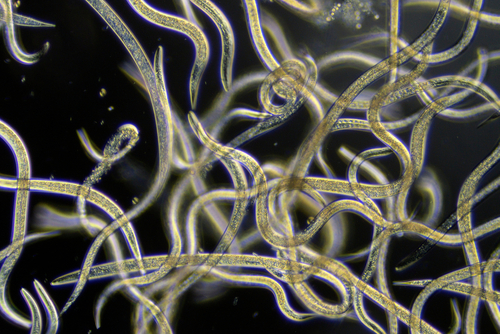
Not all nematodes are beneficial; indeed, some can harm your plants and even become parasites for you and your pets.
So, it’s essential to choose the right nematodes for your garden. Typically, the nematodes available online and in garden centres are safe for domestic use.
Nematodes are microscopic roundworms. Some species are aquatic, while others thrive in soil — these are the ones you want for your garden.
Most nematode species feed on microbes, while some prefer to eat living matter, such as larvae and grubs, that can damage your lawn. This is what makes them popular in the war against lawn pests.
Use these critters in your garden
The types of nematodes you can buy online or in garden centres are suited for everyday garden use and can be super-effective at attacking lawn pests.
You might be concerned that you’re releasing an unwelcome species into your garden, but the right kind of nematode is a boon for your lawn and dies off once the food source (grubs and larvae) is gone.
HM & HB nematodes — a weapon against grubs
Both HM & HB nematode species are effective against the grubs of:
- Weevils
- Garden leaf beetle
- June beetle
- May beetle
HM stands for “heterorhabditis megides”, which sounds a bit like a skin condition, but these nematodes are effective in the battle against the beetles and grubs listed above.
HB stands for “Heterohabdtius bacteriophora”. These are generally cheaper to buy, but they don’t multiply as readily as the HM variety, so they won’t last as long.
These nematodes find their food source, then invade the body of the larvae or bug while secreting a bacteria that eventually kills the infected beast. Both varieties only multiply once they’ve found their host, and once they’ve destroyed the hosts, the nematode population dwindles and dies off.
For best results, HM & HB nematodes require:
- Soil temperature of at least 12℃
- Moist soil, so water it if it’s looking dry.
SC nematodes — a weapon against meadow gnat larvae
If your garden is invaded by cricket varieties (it does happen in the UK occasionally) or gnats/mosquitoes, Steinernema carpocapsae (or SC) nematodes can help.
These minute nematodes are just 0.1mm in size, so they’re difficult to see, but they can be particularly effective against mosquitoes, gnats, and crickets. They work best in September for meadow gnats.
SF nematodes — a weapon against fungus gnats
Sternermena feltiae (SF) nematodes are effective in the battle against fungus gnats, which feed on dead organic matter. Fungus gnats can be helpful in the garden because they clear dead organic materials, but they can also attack plant roots if there’s a shortage of food sources.
However, fungus gnats are more problematic indoors – they’re commonly found in greenhouses, where the atmosphere is hot and damp.
SF nematode will kill the fungus gnat larvae, stunting the reproductive cycle of the gnat.
They work best in soil of 8℃ and over and can be used all year round indoors.
SK nematodes — a valuable weapon against weevils in low temperatures
Steinernema kraussei (SK) nematodes are harmless to crops, humans, and beneficial insects, but they swim in the thin film of water of soil particles to seek out the vine weevil.
The SK nematode is effective at temperatures as low as 5℃ and up to 12℃. They’re ideal for use in early spring before the temperatures have risen significantly and in late autumn when the temperature begins to drop.
PH nematodes — battling against snails
Snails are generally harmless little creatures until they attack your veg patch. They can eat their way through your lettuce in a matter of hours.
Of course, there are plenty of approaches to battling snails and slugs, from beer traps to poison. However, remember that the birds tend to eat slugs and snails, so if you’ve killed them with poison, it can also make our feathered friends sick.
So, Phasmarhabditis hermaphrodita (PH) nematodes are the answer to more safely killing off the snails that are chomping through your veg.
However, this isn’t an instant battle — it takes a little time as the PH nematode penetrates the snails’ bodies, slowly decomposing them from the inside. And while that sounds totally gross, it’s nature’s way of dealing with pests — so you don’t need to feel quite so guilty.
You may have to apply nematodes several times to get rid of your snail invasion, and it can take a few weeks to clear them. So, I recommend combining nematode warfare with the typical slug tracks and creep barriers for the best results.
PH nematodes are most effective when the soil temperature is between 10-25℃.
Lawn doctor Louis says:
Before you take action against your garden’s grubs, ensure they are not the larvae of rose or rhinoceros beetles. These species are protected and won’t feed on your plants.”
How many nematodes do I need to kill off my garden pests?

Calculating the number of nematodes you need depends on the treatment area. Generally speaking, we recommend 500,000 nematodes per square metre, which might sound like a massive population, but remember: they’re teeny tiny.
Use this table to help you calculate according to the surface area:
| Number of nematodes | Square meterage |
|---|---|
| 6 million | 12 |
| 12 million | 24 |
| 50 million | 100 |
How to apply nematodes in your garden
Once your nematodes have arrived, use them as quickly as possible — remember, they’re living things and need to eat! If you’re not going to use them for a while, stick them in your fridge.
Avoid applying nematodes if it’s too hot or sunny — they might dry out and die in these conditions. Overcast weather is ideal.
They’ll arrive in a sachet containing a nematode paste.
How to water them in
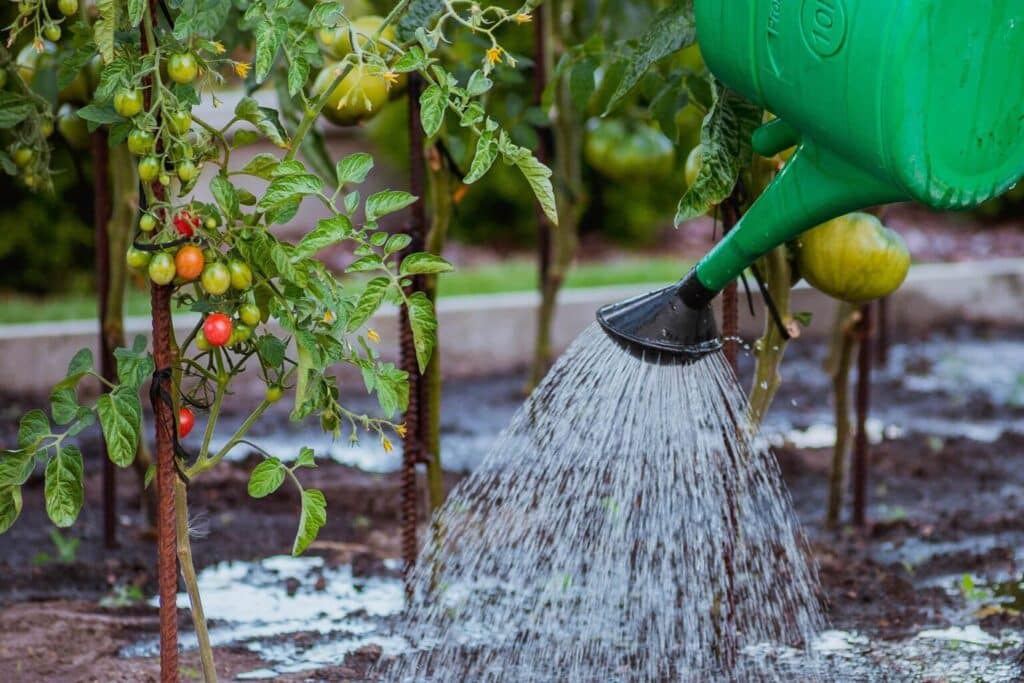
- Open the sachet and mix the paste with a small volume of water, turning it into a slurry. Then dilute the slurry with 2-5 litres of water — follow the instructions on the packet.
- Pour the nematode solution into a watering can, and sprinkle the mix wherever you’re experiencing problems. It’s wise to treat AROUND problem areas, not just the direct spot — this way, you’ll catch more pests.
- Keep the soil moist over the next few weeks to ensure the nematodes remain active.
And that’s it. You should see results in around 3-7 days, although you may have to wait between two and four weeks for the full effect.
Nematodes attack pests’ bodies from the inside out, so you won’t find dead insect bodies — they will decompose naturally.
What are the pros of using them?
These are the advantages of using nematodes rather than chemical pesticides:
- Odourless after use
- Harmless
- Comparatively cheap
- Suitable for large and small areas
- Can be used outdoors and in greenhouses
- Invisible (compared to traps, etc.).
Signs of harmful nematodes
You won’t see any adverse effects of nematode use if you buy them from a reputable source. However, as mentioned earlier, not all nematodes fight grubs and larvae; some invade your plants’ roots.
The harmful species invade the root system and change the plant’s metabolism via their saliva. For example, Beet cyst nematodes (Heterodera schachtii) can damage beetroot, spinach, and rapeseed.
Other types prey on potato plants, while other harmful species can attack your bedding plants.
Symptoms of harmful nematode invasions

The typical signs of harmful species invasions are:
- Irregular plant growth
- Deformed roots and leaves
- Root rot
- Plant discolouration
- Wilted leaves and branches
- Reduced number of flowers
The following plants are susceptible to harmful nematodes:
- Apple trees
- Strawberries
- Cucumbers
- Hydrangea
- Begonia
- Potato
- Spinach
- Turnips
- Celery
- Tomatoes
- Aubergines
Fighting a harmful species invasion
The best approach to killing off harmful species is to starve them out. So, if you can, lay your soil fallow for a few months — remove the entire root system of your plants, and dispose of the waste in an organic waste bin (not your compost heap).
This approach is most successful during a long hot summer when the soil is likely to dry out. Keep the fallow soil weed free, or the nematodes will eat those instead.
Marigolds and Tagetes — nature’s natural remedy
Some plants have developed natural defences against nematodes; marigolds and tagetes are prime examples. Their roots grow terthiophenes, which are toxic to nematodes.
Marigolds make great bedding partners for carrots, celery, and onions to help keep invading species at bay. Alternatively, plant marigolds in your fallow soil — that will also keep the nematodes away.
Any questions
I hope you’ve got everything you need regarding the use of nematodes to attack lawn and garden pests. But if you have questions, don’t hesitate to get in touch!
We love hearing from you and will get back to you as soon as we possibly can.
Thanks for reading.
Nematodes are worm-like, microscopic animals that are extremely species-rich. It is estimated that there could be up to 10 million different species. In agriculture, parasitic nematodes are used for pest control. Nematodes suitable for garden and greenhouses are are harmless to humans, animals and plants.
These microscopic animals are round and long, like a parasitic worm. The nematodes you use in the garden are invisible to the naked eye – just 0.1mm in length. They arrive in sachets and are watered into your garden soil, helping attack garden pests, such as ants, slugs, snails, grubs, and larvae.
Nematodes like moist soil, so wait until the evening to deploy them on hot days; overcast weather is perfect. Most nematode species are active at soil temperatures between 12 and 30 degrees. SK nematodes, on the other hand, are ideally suited for use on colder days at soil temperatures between 5 and 12 degrees.
-
Firebugs in the Garden: What now?!Firebugs in your garden? SPOILER ALERT – they're benign! They won't harm you or your garden. Find out how these interesting bugs contribute to your garden's ecosystem.Read more
-
How to Prevent and Control Scale InsectsScale insects are tiny sap-loving insects that can kill your plants if left to their own devices. How to identify them, treat the problem, and nurse your plants back to health after an infestation.Read more
-
How to Prevent and Control Mealybugs on your Plants (and aftercare)Mealybugs look like little fluffy specks of mould, but they'll quickly destroy your house plants or greenhouse plants. Learn how to spot an infestation and what to do to prevent the problem from spreading.Read more
-
Recognise and Control Mares Tail in your garden: from Identification to EradicationMares tail (aka Horsetail) is an invasive weed with deep roots, which make it a real challenge to eradicate. Find out about this fascinating weed (and find out how to tackle the problem).Read more
-
How to get rid of flies: the best tips and tricks!Having flies buzzing around the house is not only annoying, it can pose a significant health hazard. Find out how to get rid of flies without resorting to harsh chemicals and poisons.Read more
-
Whitefly on your plant: Prevention, Control, and TreatmentWhitefly are tiny little insects that quickly kill your plants and attract ants! Find out how to prevent and control an infestation.Read more
-
How to Get Rid of Wasps: Tips and Tricks!Wasps! What a nightmare! While these aggressive little insects offer a painful sting, there's more to the wasp that you might first think. Prevent them arriving with out handy tips.Read more
-
How to Identify, Fight, and Prevent Vine WeevilThe vine weevil is a destructive little pest. Recognise the signs of infestation to prevent the widespread damage this critter can do to your garden plants.Read more
Leave a comment
Your answer will be displayed on the site and the interested party will be notified by email.
Leave a comment
Have a question or want to share your experience? Leave us a comment.

- Order by 2PM = shipped today
- 250.000+ satisfied customers!
- 60 day satisfaction guarantee

- Order by 2PM = shipped today
- 250.000+ satisfied customers!
- 60 day satisfaction guarantee

🌱 All important maintenance moments for your lawn during the year. Leave your email and we will send you the lawn calendar for free.
Enter your email
Receive the lawn calendar in the mail
Enjoy a green lawn all year round!





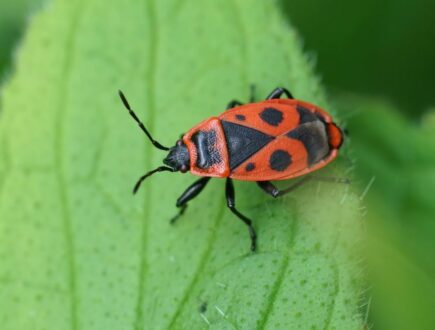
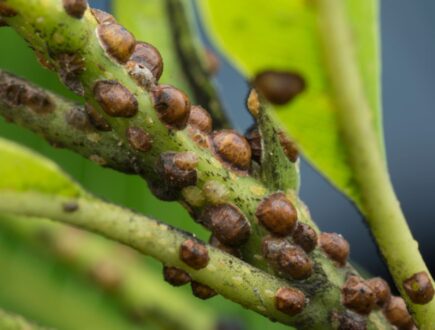
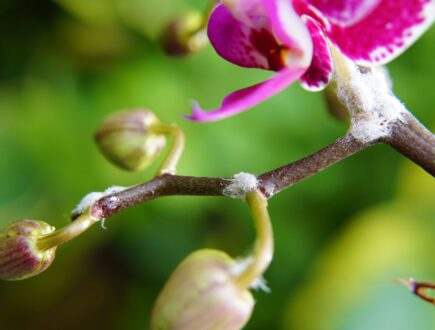
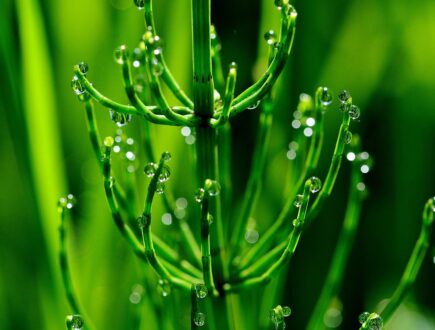
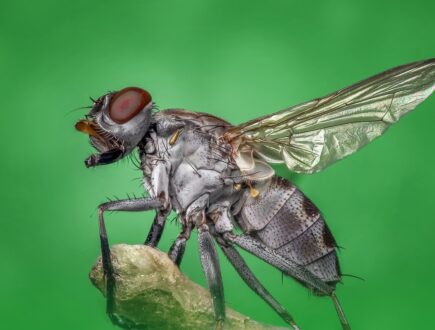
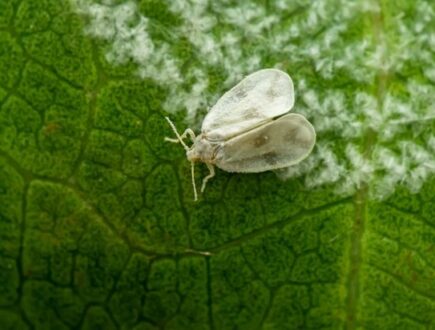

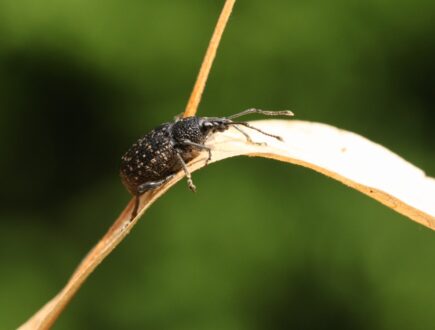









Comments (0)
There are no comments yet. Well then, what are you waiting for to
Be the first to write your comment!inaugurate this pretty page?
Do you have some comments?